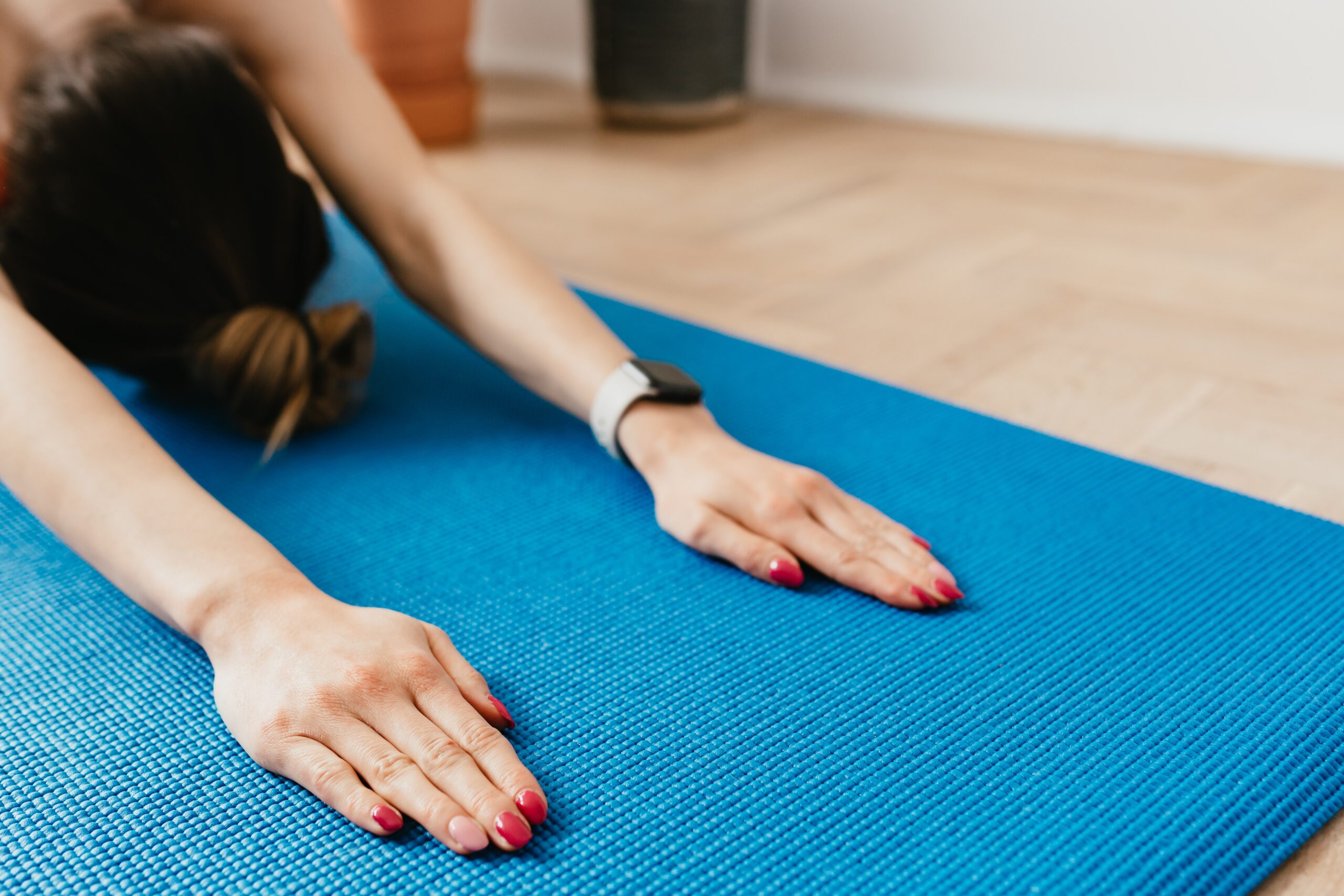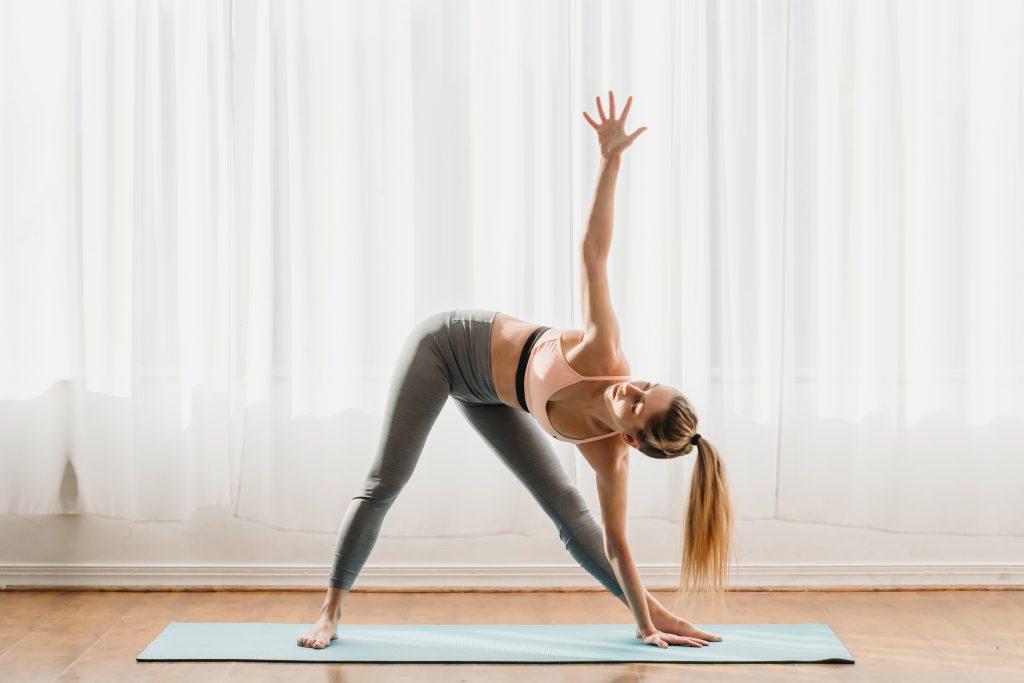
Back pain affects millions of people worldwide but is most common in individuals leading sedentary lifestyles, office workers, fitness enthusiasts, people with back pain, older adults, and pre-and postnatal women. Hence, finding effective solutions can be a daunting task.
In this article, we will explore the best yoga poses for relieving back pain, providing you with a holistic and natural way to find relief. These yoga poses offer a range of benefits such as stretching, strengthening, and relaxation. They target various muscle groups, improve flexibility, relieve tension, and promote overall well-being. Incorporating these poses into your practice can enhance your physical and mental health.
What are the Best Yoga Poses for Relieving Back Pain?
Back pain can stem from various factors such as poor posture, muscle imbalances, or even stress. Yoga, with its focus on stretching, strengthening, and relaxation, can help alleviate these issues and promote a healthier back. Here are some of the best yoga poses to include in your practice for relieving back pain:
1. Child’s Pose (Balasana)
This gentle resting pose stretches and relaxes the muscles in your lower back, offering relief from tension and discomfort. Start by kneeling on the floor, bringing your big toes together, and sitting back on your heels. Slowly fold forward, bringing your chest to rest on or between your thighs, and extend your arms forward. Breathe deeply and hold the pose for several breaths, allowing your back to release any built-up tension.
2. Cat-Cow Pose (Marjaryasana-Bitilasana)
The cat-cow pose is a dynamic movement that improves spinal flexibility and gently massages the back muscles. Start by positioning yourself on the ground with your hands placed directly under your shoulders and your knees aligned beneath your hips. As you inhale, arch your back and lift your tailbone, allowing your belly to sink toward the mat (cow pose). On the exhale, round your spine, tuck your chin, and tuck your tailbone under (cat pose). Repeat this flowing movement for several rounds, coordinating your breath with each motion.
3. Downward-Facing Dog (Adho Mukha Svanasana)
One of the most recognized yoga poses, a downward-facing dog, strengthens the entire body while stretching the hamstrings and relieving tension in the back. Begin by assuming a position on all fours with your hands firmly planted on the ground and your knees supporting your body weight. Next, elevate your hips, extending your legs fully and directing your heels towards the floor. Spread your fingers wide and engage your core to create a lengthening sensation along your spine. Hold the pose for a few breaths, feeling the stretch through your back and legs.
4. Triangle Pose (Trikonasana)
Triangle pose helps to strengthen the muscles supporting the spine while stretching the sides of the body. Begin by standing with your feet wide apart. Turn your right foot out 90 degrees and extend your arms parallel to the floor. Reach forward with your right hand, placing it on your shin, ankle, or the floor, and extend your left arm upward. Gently twist your torso, opening your chest toward the ceiling. Maintain the posture for a few breaths, then proceed to repeat the sequence on the opposite side.
5. Bridge Pose (Setu Bandha Sarvangasana)
Bridge pose is a great way to strengthen the back, glutes, and hamstrings while opening up the chest and shoulders. Lie on your back with your knees bent and feet hip-distance apart. Press through your feet, engaging your glutes and lifting your hips off the ground. Interlace your hands beneath your pelvis and roll your shoulders underneath your body. Stay in the pose for a few breaths, feeling the stretch across your chest and the strength building in your back.
Best Practices for Doing Yoga Poses to Relieve Back Pain:
- Warm-Up: Begin your yoga practice with a gentle warm-up to prepare your body for the poses. Simple stretches and deep breathing can help relax and loosen your muscles.
- Proper Alignment: Pay close attention to your body’s alignment in each pose. Ensure that your spine is in a neutral position, and your movements are controlled to prevent strain.
- Breathe Mindfully: Coordinate your breath with your movements. Inhale deeply during poses that open the chest or extend the spine, and exhale fully during poses that involve rounding or folding.
- Start Slowly: If you’re new to yoga or have a history of back pain, start with the gentlest variations of these poses and gradually progress to more advanced versions as your flexibility and strength improve.
- Listen to Your Body: Yoga should never cause pain. If you feel sharp or intense discomfort during a pose, back off and find a modified version, or skip it entirely. It’s essential to respect your body’s limitations.
- Hold Poses Steadily: Hold each pose for several breaths to allow your muscles to relax and elongate. Avoid rushing through poses; focus on the quality of your movements.
- Props and Modifications: Don’t hesitate to use yoga props like blocks, straps, or a cushion to support your practice and make poses more accessible. Modify poses as needed to suit your comfort level.
- Consistency: Practice these poses regularly to experience the full benefits. Consistency can help in gradually relieving back pain and improving overall back health.
- Smooth Transitions: Pay attention to the transitions between poses. Move slowly and mindfully, especially when moving from a flexed position to an extended one or vice versa.
- Balance and Variety: Incorporate a variety of yoga poses into your routine to work on different muscle groups and maintain overall balance in your practice.
- Post-Practice Relaxation: After your yoga session, take a few minutes to lie in Savasana (Corpse Pose) or another relaxation pose. This allows your body to absorb the benefits of the practice and promotes relaxation.
- Hydration: Stay hydrated before, during, and after your yoga practice to prevent muscle cramps and maintain flexibility.
- Seek Professional Guidance: If you have chronic or severe back pain, consider consulting a yoga instructor with experience in therapeutic yoga or a healthcare professional for personalized guidance and modifications.
- Progressive Improvement: Track your progress over time. Document how you feel after each practice and any changes in your back pain. This can motivate you to continue and adjust your practice as needed.
- Mind-Body Connection: While performing these poses, focus on the sensations in your body and the breath. Mindful awareness can enhance the therapeutic benefits of yoga.
Remember that yoga is not a one-size-fits-all practice, and what works for one person may not work for another. The key is to approach your practice with mindfulness and adapt it to your specific needs and abilities. Over time, consistent yoga practice can be an excellent tool for relieving and preventing back pain.
Final Thoughts
Back pain can significantly impact our daily lives, but with the right approach, it doesn’t have to be a constant struggle. Incorporating the best yoga poses for relieving back pain into your routine can provide relief, improve flexibility, and enhance overall well-being. Remember to practice consistently, listen to your body, and seek professional guidance if needed. Embrace the healing power of yoga and take a step towards a pain-free back and a healthier, happier you.
Also Read: 12 Benefits of Yoga to Boost Energy Levels and Mental Well-being
FAQs
- Q. What causes back pain?
- A: Back pain can have various causes, including muscle strain or sprain, poor posture, herniated discs, spinal stenosis, or even stress and tension. It is essential to identify the underlying cause of your back pain to determine the most appropriate treatment approach.
- Q: Can yoga really help relieve back pain?
- A: Yes, yoga can be highly effective in relieving back pain. The combination of gentle stretching, strengthening, and relaxation techniques used in yoga helps improve flexibility, correct posture, and alleviate muscle imbalances. Regular practice can lead to increased core strength, improved spinal alignment, and reduced tension in the back, resulting in pain relief.
- Q: Can anyone practice these yoga poses, regardless of their fitness level?
- A: Most of the yoga poses mentioned above can be modified to suit different fitness levels and body types. However, it’s crucial to listen to your body and work within your limitations. If you have any existing medical conditions or injuries, it’s advisable to consult with a qualified yoga instructor or healthcare professional before starting a yoga practice.
- Q: How often should I practice these yoga poses to experience relief from back pain?
- A: Consistency is key when practicing yoga for back pain relief. Aim for at least three to four sessions per week, gradually increasing the duration and intensity of your practice. Starting with shorter sessions and gradually building up will allow your body to adapt and prevent overexertion. Remember, it’s better to practice regularly for shorter durations than sporadically for longer periods.
-
Q: Can yoga replace medical treatment for back pain?
- A: Yoga can be a valuable complement to medical treatment for back pain, but it is not a substitute for professional medical advice or intervention. If you have severe or chronic back pain, it’s essential to consult with a healthcare provider to determine the underlying cause and develop a comprehensive treatment plan that may include yoga alongside other interventions such as physical therapy or medication.
-
Q: Are there any precautions I should take when practicing yoga for back pain?
- A: While yoga is generally safe, it’s important to practice mindfully and take necessary precautions to prevent injury. Listen to your body, avoid pushing beyond your limits, and modify poses as needed. If a pose causes sharp pain or discomfort, stop immediately. Additionally, always warm up before starting your yoga practice and cool down afterward to prepare and soothe your muscles.
Hashtags: #YogaForBackPain #RelieveBackPain #YogaPoses #HolisticHealth #NaturalRemedies #Flexibility #WellBeing #YogaBenefits #BackPainRelief #HealthyLifestyle #Fitness #MindBodyConnection #YogaTherapy #StressRelief #PhysicalHealth
Note: The information provided in this article is for educational purposes only and should not be taken as medical advice. For personalized health recommendations, it is always advisable to consult with a healthcare professional before incorporating any changes to your daily health routine.








No comment yet, add your voice below!